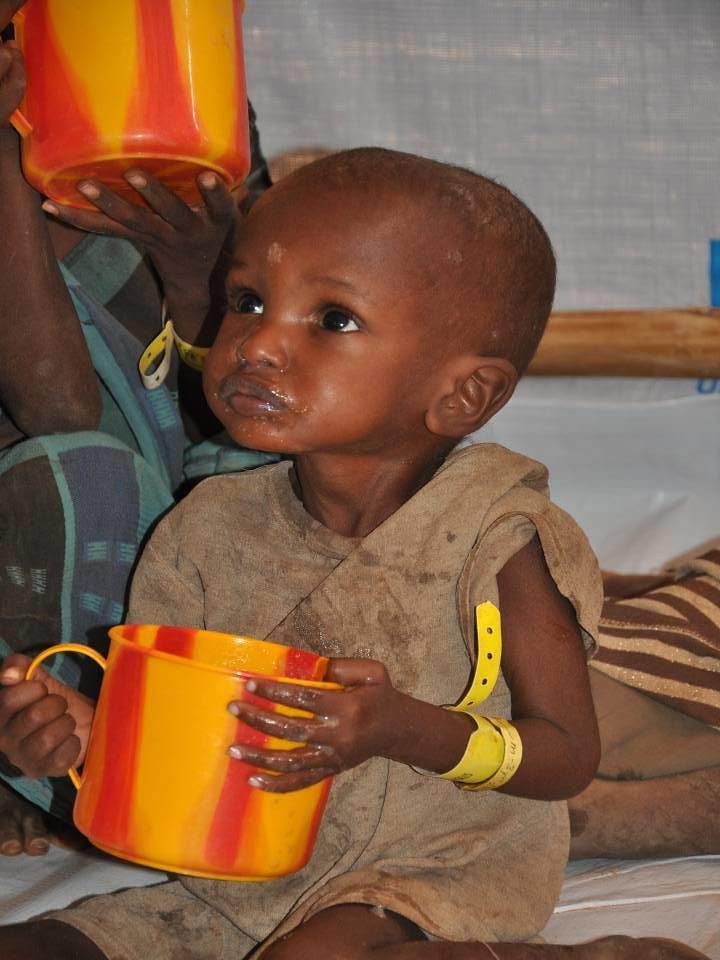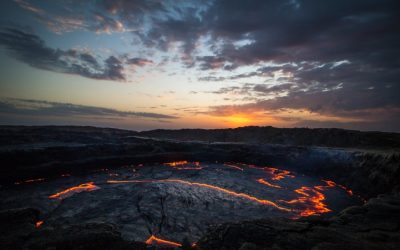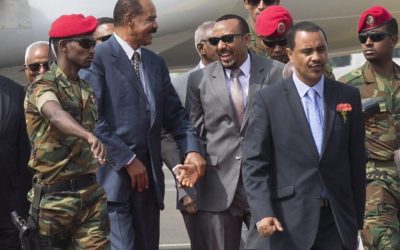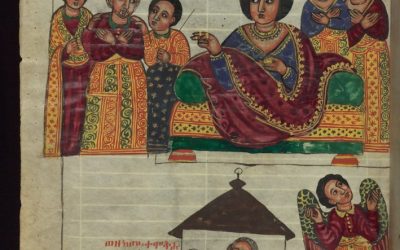Geography of Ethiopia
Ethiopia is a landlocked country located in the Horn of Africa, known for its diverse and rugged terrain. Its geography features highlands, mountains, vast plateaus, and lowland plains, creating a varied landscape that influences its climate and biodiversity. The country is home to the Great Rift Valley, which cuts through its southern part, offering unique geological features and lakes. Ethiopia’s varied geography plays a crucial role in shaping its culture, agriculture, and history.
Location and Borders
Ethiopia is a landlocked country located in the Horn of Africa in Eastern Africa. It is known for its diverse landscape that includes mountains, highlands, deserts, and lowlands. The country shares its borders with Eritrea to the north, Djibouti and Somalia to the east, Sudan and South Sudan to the west, and Kenya to the south. Ethiopia’s strategic location places it at the crossroads of northeastern Africa, making it a significant geographical and cultural hub in the region.
Topography and Landscape
Ethiopia, located in the Horn of Africa, is characterized by diverse geography and varied landscapes that define its natural beauty and ecological diversity. The country features rugged mountains, expansive plateaus, deep valleys, and lowlands, offering a complex topography that influences climate, agriculture, and settlement patterns.
The Ethiopian Highlands dominate the landscape, with the prominent Simien and Bale Mountains reaching elevations over 4,500 meters. These highlands are often referred to as the “Roof of Africa” and are home to some of the country’s most fertile and lush areas, rich in endemic flora and fauna. The Great Rift Valley, stretching from the northeast to the southwest, cuts through Ethiopia, creating a series of valleys and lakes that add to the country’s geographical complexity.
Ethiopia’s landscape is also marked by vast lowland plains in the east and southeast, such as the Danakil Depression, one of the hottest and most inhospitable places on earth, known for its extreme temperatures and volcanic activity. The country boasts numerous lakes, including Lake Tana, the largest in Ethiopia, which feeds into the Blue Nile river, and the impressive Rift Valley lakes like Lake Abaya and Lake Chamo.
This diverse topography supports a wide range of ecosystems and climates, from temperate highland areas to arid lowlands, making Ethiopia a country of remarkable geographical richness and ecological importance.
Climate Zones
Ethiopia is a landlocked country located in the Horn of Africa, characterized by diverse geographical features that include highlands, lowlands, and rugged mountains. The country is known for its extensive plateaus and mountain ranges, such as the Ethiopian Highlands, which are often called the “Roof of Africa.” These highlands are surrounded by lowland plains and valleys, creating a varied topography across the nation.
The climate zones in Ethiopia are equally diverse, influenced by the country’s topography and elevation. The highland areas typically experience a temperate climate with mild temperatures and distinct wet and dry seasons, making them suitable for agriculture and dense settlement. In contrast, the lowland regions, such as the Danakil Desert in the east and parts of the Ogaden in the southeast, have an arid or semi-arid climate with high temperatures and limited rainfall. These climate zones contribute to the rich ecological diversity of Ethiopia, supporting various agricultural practices and ecosystems across the country.
History of Ethiopia
Ethiopia, one of the oldest inhabited countries in the world, boasts a rich and complex history that dates back thousands of years. Known for its ancient civilizations, it was the center of the powerful Kingdom of Aksum and has preserved its unique cultural heritage through centuries. Throughout its history, Ethiopia has experienced remarkable achievements, including early adoption of Christianity and resistance against colonization, shaping its identity as a resilient and historically significant nation.
Ancient Civilizations
Ethiopia is one of the oldest nations in the world, with a rich history that dates back thousands of years. It is renowned for its ancient civilizations, including the Kingdom of D’mt and the Aksumite Empire, which played a crucial role in early human history. The Aksumite Empire, existing from approximately 100 CE to 940 CE, was a major trading power and is considered one of the great civilizations of the ancient world, known for its impressive obelisks and early adoption of Christianity.
Throughout history, Ethiopia has maintained a unique cultural and religious identity, developing its own script, language, and Christian traditions. The Kingdom of Kush to the south, and interactions with neighboring Egypt and Arabian regions, influenced its development. The Solomonic Dynasty, claiming descent from the biblical King Solomon and the Queen of Sheba, established a continuous line of imperial rule, which contributed to Ethiopia’s independence and resilience over centuries.
Ancient Ethiopian civilizations made significant advances in architecture, agriculture, and trade, leaving behind archaeological sites and artifacts that continue to fascinate researchers today. Their legacy is a testament to Ethiopia’s long-standing role as a cradle of human civilization and its enduring cultural heritage.
Medieval Period
The medieval period in Ethiopian history spans from the 4th to the 15th century, a time marked by the rise of powerful kingdoms and the establishment of Christianity as the state religion. During this era, the Kingdom of Aksum emerged as a significant empire, known for its impressive obelisks, wealth, and early adoption of Christianity in the 4th century under King Ezana. The Aksumite civilization thrived through trade, controlling key trade routes that connected Africa, Arabia, and the Mediterranean. Following the decline of Aksum around the 7th century, Ethiopia entered a timeline of regional kingdoms and city-states, such as the Zagwe Dynasty, which is famed for constructing the rock-hewn churches of Lalibela. The medieval period also saw the consolidation of the Ethiopian Orthodox Church, which became a central cultural and spiritual force. Throughout these centuries, Ethiopia maintained its independence and developed a rich cultural identity, influenced by Christianity, indigenous customs, and interactions with neighboring civilizations, setting the foundation for the modern nation.
Modern History and Independence
Ethiopia, one of the oldest nations in the world, boasts a rich and complex history that dates back thousands of years. It was one of the few African countries that largely resisted colonization during the Scramble for Africa, maintaining its independence during the colonial era. Historically, Ethiopia was known for the powerful Kingdom of Aksum, an ancient civilization famous for its achievements in architecture, trade, and Christianity, which became the dominant religion by the 4th century AD.
In modern history, Ethiopia experienced significant changes, especially during the 19th and 20th centuries. Emperor Menelik II is celebrated for his victory over Italian invasions at the Battle of Adwa in 1896, a pivotal moment that secured Ethiopian sovereignty and became a symbol of African resistance to colonization. The 20th century saw the reign of Emperor Haile Selassie, who modernized the country and played a crucial role in the formation of the Organization of African Unity, now the African Union.
Ethiopia’s path to independence was largely unbroken until the Italian occupation from 1936 to 1941, during which Italian forces annexed the country under Mussolini’s regime. Following the defeat of the Italians in World War II, Ethiopia regained its sovereignty. The subsequent decades were marked by political upheaval, including the overthrow of Haile Selassie in 1974 and the rise of a communist government led by the Derg regime. Ethiopia transitioned toward a federal parliamentary system in the early 1990s and has continued to develop its political and economic landscape, striving for stability and growth in the modern era.
Government and Politics
Ethiopia, a country rich in history and culture, has a complex political landscape shaped by its diverse population and historical developments. Its government operates as a federal parliamentary republic, emphasizing both regional autonomy and national unity. Understanding Ethiopia’s political structure offers insight into its ongoing efforts toward stability, development, and governance in the Horn of Africa region.
Political System
Ethiopia has a federal parliamentary republic political system, where the President is the head of state and the Prime Minister is the head of government. The country’s political framework is rooted in a constitution that establishes the separation of powers among the executive, legislative, and judicial branches. The Ethiopian People’s Revolutionary Democratic Front (EPRDF) historically played a dominant role in the country’s politics, although recent years have seen increased political pluralism and the emergence of new political parties. The National Electoral Board is responsible for organizing elections, which are held regularly to select representatives for the Federal Parliamentary Assembly. Ethiopia’s political landscape continues to evolve as it seeks stability, national unity, and economic development amidst diverse ethnic and regional groups. Ensuring democratic governance and respecting human rights remain important priorities for the country’s political future.
Administrative Divisions
Ethiopia is a federal parliamentary republic located in the Horn of Africa. It operates under a multi-ethnic federal system that recognizes the diverse cultures and languages of its population. The government is headed by the Prime Minister, who is the chief executive, while the President serves as the head of state with mainly ceremonial duties. The nation’s political structure includes multiple political parties that participate in national and regional elections, promoting democratic governance. Ethiopia’s administrative divisions are organized into regional states, each with its own government and constitution, along with special districts and administrative zones, facilitating local governance and preservation of cultural identities. These divisions enable Ethiopia to manage its vast and diverse territory effectively, ensuring representation and development across different regions.
Current Political Climate
The current political climate in Ethiopia is marked by significant challenges and ongoing efforts toward stabilization. The country continues to navigate complex ethnic tensions and regional conflicts, particularly in the Tigray region. Despite recent peace agreements and attempts at reconciliation, political tensions remain high, with various factions advocating for different visions of governance. The government is working to implement reforms aimed at fostering unity and democracy, but progress is often hindered by security concerns and political divisions. International actors are monitoring the situation closely, emphasizing the importance of dialogue and inclusive governance to achieve lasting peace and stability in Ethiopia.
Economy of Ethiopia
The economy of Ethiopia is one of the fastest-growing in Africa, driven by agriculture, manufacturing, and services sectors. With a rich history and diverse resources, Ethiopia has made significant progress in reducing poverty and expanding infrastructure. The country’s strategic initiatives aim to boost industrialization, increase exports, and attract foreign investment, positioning Ethiopia as a key player in the regional economy.
Key Industries
The economy of Ethiopia is one of the fastest-growing in Africa, driven by agriculture, industry, and services sectors. The country has made significant progress in reducing poverty and expanding infrastructure, positioning itself as a key player in regional development.
- Agriculture: The backbone of Ethiopia’s economy, employing a large portion of the population, with coffee being its most famous export crop.
- Manufacturing: Growing industries include textiles, leather products, and construction materials, supported by government initiatives to boost industrialization.
- Services: The sector has expanded to include banking, tourism, and telecommunications, contributing to the country’s GDP and employment.
Agriculture and Livestock
Ethiopia’s economy is primarily based on agriculture, which remains the backbone of the country’s livelihood and economic growth. The sector employs a significant portion of the population and contributes a large share to the GDP. Despite recent efforts to diversify, agriculture and livestock continue to play a vital role in Ethiopia’s development.
- agriculture accounts for about 33% of Ethiopia’s GDP
- More than 70% of the population depends on farming and livestock for their income
- Major crops include coffee, maize, teff, sorghum, and wheat
- Livestock production is extensive, including cattle, camels, goats, and sheep
- Challenges faced include erratic weather, land degradation, and limited access to modern technology
The government has been implementing policies to improve agricultural productivity, such as introducing new farming techniques, expanding irrigation, and supporting livestock development. These efforts aim to enhance food security, reduce poverty, and promote sustainable economic growth in Ethiopia.
Development Projects and Growth Sectors
India is a rapidly developing country with a diverse economy that includes agriculture, manufacturing, and services sectors. Its economy has shown consistent growth over the past few decades, driven by a expanding middle class, technological advancements, and increased foreign investment.
Culture and Society
Culture and society in Ethiopia are rich and diverse, reflecting a long history of civilization and a variety of ethnic groups. The country is known for its unique traditions, languages, and customs that have been preserved over centuries. Ethiopian society is deeply rooted in community values, religious practices, and cultural celebrations that shape the daily lives of its people. Exploring Ethiopia’s culture offers a fascinating glimpse into a nation where ancient traditions coexist with modern influences.
Languages and Ethnic Groups
Ethiopia is a country rich in cultural diversity and vibrant societal traditions. Its history, art, and customs reflect a deep-rooted heritage that spans thousands of years, making it one of the oldest nations in the world. The society is characterized by a blend of ancient traditions and modern influences, creating a unique cultural landscape.
The languages spoken in Ethiopia are numerous, with over 80 different languages identified across the country. Amharic is the official national language and widely used in government and education. Other prominent languages include Oromo, Tigrinya, Somali, and Afar, among many others, highlighting the country’s linguistic diversity.
Ethiopia is home to a variety of ethnic groups, each with its distinct identity, customs, and traditions. The Oromo and Amhara are the largest ethnic groups, but there are many others such as the Tigray, Somali, Sidama, and Gurage. This ethnic mosaic is celebrated through colorful festivals, traditional music, dance, clothing, and culinary practices that exemplify the country’s rich cultural tapestry.
Religious Practices
Culture and society in Ethiopia are deeply rooted in its diverse history and rich traditions, reflecting a blend of ancient customs and modern influences. The country is known for its unique traditions, languages, and artistic expressions that vary significantly across its regions. Religious practices play a vital role in shaping Ethiopian society, with Christianity and Islam being the predominant faiths. Ethiopian Christianity, particularly the Ethiopian Orthodox Tewahedo Church, has been a cornerstone of national identity for centuries, influencing architecture, festivals, and daily life. Islamic traditions are also prominent, especially in regions like Oromia and Somali, where Islamic festivals, prayers, and community gatherings strengthen social ties. Overall, religion in Ethiopia is more than spiritual belief; it is a vital aspect of social cohesion and cultural heritage that continues to define the nation’s diverse societal fabric.
Festivals and Traditions
Culture and society in Ethiopia are deeply rooted in a rich history that spans thousands of years. The country is known for its diverse ethnic groups, each contributing unique traditions, languages, and customs to the national cultural mosaic. Social life often revolves around community and family, with strong values placed on respect and hospitality.
Festivals in Ethiopia are vibrant and colorful celebrations that reflect the country’s religious and cultural heritage. One of the most prominent is Timket, the Ethiopian Epiphany, which features elaborate processions and rituals commemorating the baptism of Jesus. Another significant festival is Meskel, celebrating the discovery of the True Cross with bonfires and festivities across the nation.
Traditional music, dance, and cuisine play essential roles during these festivals and in daily life. The Ethiopian Orthodox Church’s influence is evident in many customs and festivities, emphasizing spiritual devotion and cultural identity. Overall, Ethiopia’s festivals and traditions highlight its rich cultural tapestry and enduring societal values.
Tourism and Landmarks
Ethiopia is a captivating country known for its rich history, diverse culture, and stunning landmarks. From ancient archaeological sites to vibrant cities, Ethiopia offers unique experiences for travelers. Explore its iconic landmarks, such as Lalibela’s rock-hewn churches and the majestic Simien Mountains, to discover the country’s extraordinary heritage and natural beauty.
World Heritage Sites
Ethiopia is a country rich in history and culture, offering numerous tourism opportunities and iconic landmarks. One of its most famous sites is Lalibela, renowned for its rock-hewn churches that are considered a marvel of medieval architecture and a UNESCO World Heritage Site. Another key landmark is the Simien Mountains National Park, which features dramatic landscapes, diverse wildlife, and trekking adventures. Additionally, the ancient city of Axum is home to obelisks and archaeological sites that reflect Ethiopia’s former greatness and its status as a UNESCO World Heritage Site. Lake Tana, the largest lake in Ethiopia, is dotted with historic monasteries and provides scenic beauty for visitors. Ethiopia’s diverse landscapes, from highlands to lowlands, combined with its historical landmarks, make it a compelling destination for travelers. Its UNESCO World Heritage Sites highlight the country’s cultural and natural significance, attracting visitors from around the world to explore its unique heritage.
Natural Attractions
Ethiopia is a country rich in tourism attractions, known for its unique landscapes and historic landmarks. Visitors are drawn to its ancient history, vibrant culture, and diverse natural scenery. The country boasts iconic landmarks such as Lalibela’s rock-hewn churches, which are UNESCO World Heritage Sites and a marvel of medieval architecture. The ancient city of Axum, believed to be the home of the Ark of the Covenant, also attracts many tourists.
Natural attractions in Ethiopia are equally spectacular. The Simien Mountains offer breathtaking views and opportunities for trekking and wildlife observation, including species like the Ethiopian wolf. The Danakil Depression is one of the hottest and most extraordinary places on Earth, famed for its otherworldly volcanic landscapes and colorful mineral deposits. Lake Tana, the largest in Ethiopia, is dotted with historic monasteries and is the source of the Blue Nile, which flows into the Nile River. These landmarks and natural sites make Ethiopia a captivating destination for travelers seeking adventure and cultural exploration.
Cultural Heritage Locations
Ethiopia is a country rich in tourism and cultural heritage, attracting visitors from around the world to explore its diverse landmarks and historic sites. Known as the cradle of humankind, Ethiopia boasts ancient attractions such as Lalibela, famous for its rock-hewn churches that date back to the 12th century. The breathtaking Simien Mountains and Bale Mountains offer stunning landscapes and opportunities for trekking and wildlife viewing. The ancient city of Axum is home to obelisks, royal tombs, and archaeological sites that reflect its historical significance as a former empire. Lake Tana, the largest in Ethiopia, contains historic monasteries and scenic islands, serving as a vital cultural and natural hub. These landmarks showcase Ethiopia’s unique blend of history, spirituality, and natural beauty, making it a compelling destination for travelers seeking cultural enrichment and adventure.
Education and Innovation
Education and innovation are vital drivers of Ethiopia’s ongoing development and future prosperity. As the country embraces modern teaching methods and leverages technological advancements, it aims to empower its youth, enhance skills, and foster a culture of creativity. By investing in educational growth and innovative initiatives, Ethiopia is working towards building a sustainable and competitive economy that can meet the challenges of the 21st century.
Educational System
Education and innovation play a vital role in Ethiopia’s development, serving as key drivers for economic growth and social progress. The country has been making efforts to improve its educational system by expanding access to primary, secondary, and higher education to ensure that more citizens can participate in the nation’s advancement.
Ethiopia’s educational system faces challenges such as limited resources, disparity between urban and rural areas, and the need for curriculum modernization. However, recent initiatives focus on integrating technology into classrooms, fostering critical thinking, and promoting STEM (Science, Technology, Engineering, and Mathematics) education to cultivate a culture of innovation.

Furthermore, Ethiopia emphasizes vocational training and adult education to equip its workforce with relevant skills. The government collaborates with international organizations and private sectors to create innovation hubs and support research and development, aiming to transform the country into a knowledge-based economy.
By investing in education and nurturing a spirit of innovation, Ethiopia aspires to improve living standards, reduce poverty, and achieve sustainable development for its future generations. The nation recognizes that a well-educated, innovative population is essential for overcoming challenges and harnessing opportunities in a rapidly changing world.
Research and Development
In Ethiopia, education and innovation are pivotal for national development, fostering a skilled workforce capable of addressing local and global challenges. The country has made significant investments in expanding access to quality education at all levels, from primary schools to higher education institutions. Research and development (R&D) activities are increasingly prioritized to promote technological advancements and sustainable solutions tailored to Ethiopia’s unique needs. Efforts to enhance innovation include establishing research centers, encouraging university-industry collaborations, and supporting startups and entrepreneurship. These initiatives aim to boost economic growth, improve social outcomes, and position Ethiopia as a competitive player in the regional and international innovation landscape.
Notable Educational Institutions
Education and innovation play a crucial role in Ethiopia’s development, fostering a skilled workforce and encouraging new ideas that drive economic growth and social progress. The country has made significant strides in expanding access to education and improving the quality of learning, particularly through investment in technological and infrastructure development.
- Ad mass Science and Technology University – Known for advancing research in science and technology, contributing to Ethiopia’s innovation landscape.
- Addis Ababa University – The oldest and most prominent higher education institution in Ethiopia, offering diverse programs and fostering research and innovation.
- Jimma University – Recognized for its focus on health sciences, agriculture, and community development, encouraging practical solutions and local innovations.
- Hawassa University – Known for its emphasis on regional development, agriculture, and environmental sciences, promoting innovative approaches to local challenges.
Challenges and Opportunities
Ethiopia faces a unique set of challenges and opportunities in the realm of language, reflecting its rich cultural diversity and historical significance. The country is home to numerous languages and dialects, which can both pose barriers and serve as valuable assets for social cohesion and cultural preservation. Navigating these linguistic dynamics presents opportunities for fostering inclusive communication, promoting education, and strengthening national identity amidst developmental progress.
Social and Economic Challenges
Ethiopia faces a range of social and economic challenges that impact its development trajectory. Rapid population growth strains resources, exacerbating issues like unemployment, poverty, and access to quality education and healthcare. Social disparities among regions and ethnic groups create tensions that hinder national cohesion and stability. Additionally, environmental challenges such as droughts and land degradation threaten agriculture, which is a vital sector for the country’s economy. Despite these hurdles, Ethiopia also presents significant opportunities. Its young and growing population offers a potential demographic dividend, fostering innovation and productivity if properly harnessed. The country’s rich natural resources, strategic location, and ongoing infrastructure projects, including major investments in transportation and energy sectors, provide pathways for economic diversification and growth. By addressing social inequalities and investing in human capital, Ethiopia can unlock sustainable development prospects for its future.
Environmental Issues
Ethiopia faces a range of environmental challenges that threaten its natural resources and development prospects. Deforestation, land degradation, and droughts significantly impact agriculture, which is the backbone of the country’s economy. These issues are exacerbated by population growth and unsustainable land management practices, leading to loss of biodiversity and reduced water availability.
Despite these challenges, Ethiopia also has numerous opportunities to address environmental issues. The country has vast renewable energy potential, particularly in hydroelectric, wind, and geothermal power, which can help reduce reliance on fossil fuels and promote sustainable development. Additionally, Ethiopia’s rich biodiversity and unique ecosystems offer opportunities for ecotourism and conservation programs that can benefit local communities while protecting the environment.
To leverage these opportunities, Ethiopia can invest in sustainable agriculture, reforestation initiatives, and policies that promote environmental awareness. International partnerships and funding can support innovative solutions, helping the country to mitigate environmental challenges while fostering economic growth and improving the well-being of its citizens.
Future Prospects and Growth Opportunities
Ethiopia presents a dynamic landscape of challenges and opportunities that shape its development trajectory. The country faces significant hurdles such as infrastructural deficits, political stability issues, and poverty, which hinder economic growth and social progress. However, these challenges create opportunities for strategic investments, policy reforms, and international collaboration aimed at sustainable development. Ethiopia’s rich resource base, including agriculture, minerals, and hydropower potential, offers promising prospects for diversification and economic expansion.
Looking ahead, Ethiopia’s future prospects are anchored in its youthful population, which can serve as a driving force for innovation and labor productivity. The government’s focus on industrialization, infrastructure development, and technological advancements positions the country for substantial growth. The expansion of sectors like manufacturing, renewable energy, and services is expected to open new markets and generate employment opportunities. Moreover, Ethiopia’s geographic location as a gateway to Africa enhances its strategic importance in regional trade and connectivity.
Growth opportunities in sectors such as agriculture, which employs a large segment of the population, alongside emerging industries like textile, leather, and pharmaceuticals, indicate a promising economic outlook. Continued investments in education, healthcare, and technology are vital for unleashing the full potential of Ethiopia’s human capital. With effective governance and sustained development efforts, Ethiopia has the potential to transform into a middle-income country, boosting prosperity and improving the quality of life for its citizens.





0 Comments